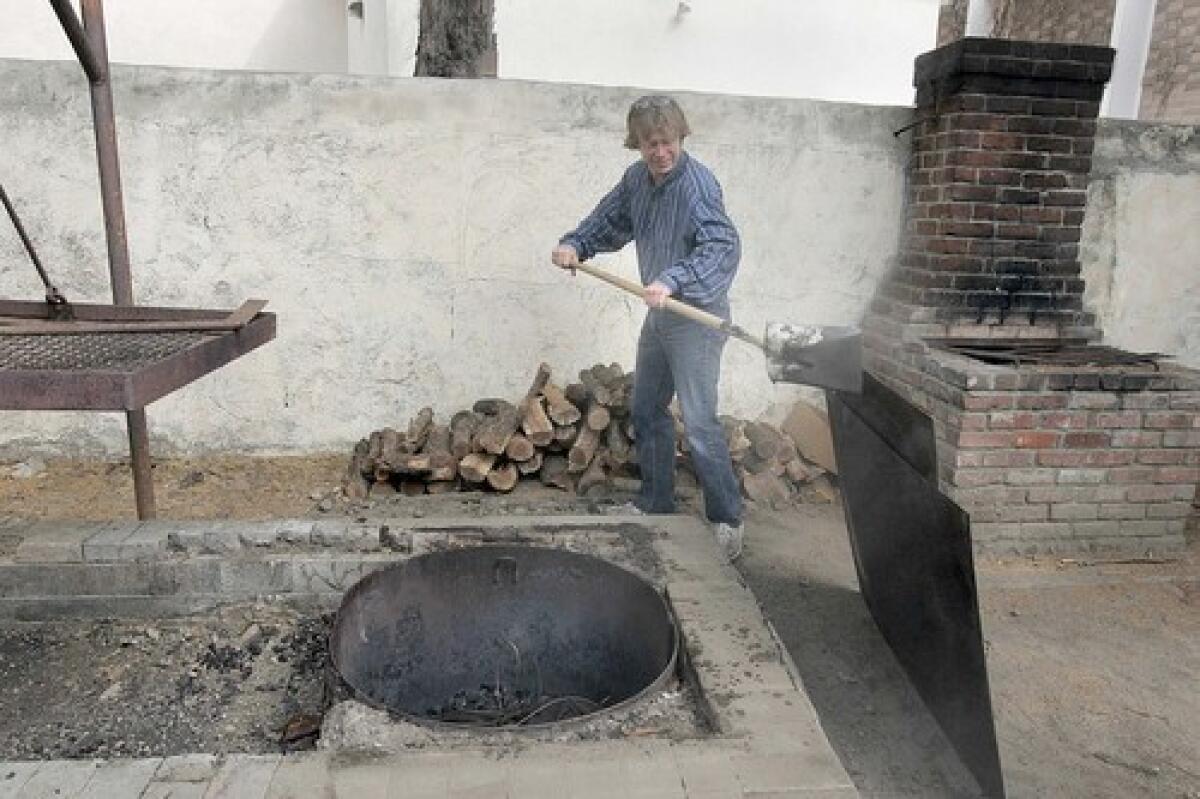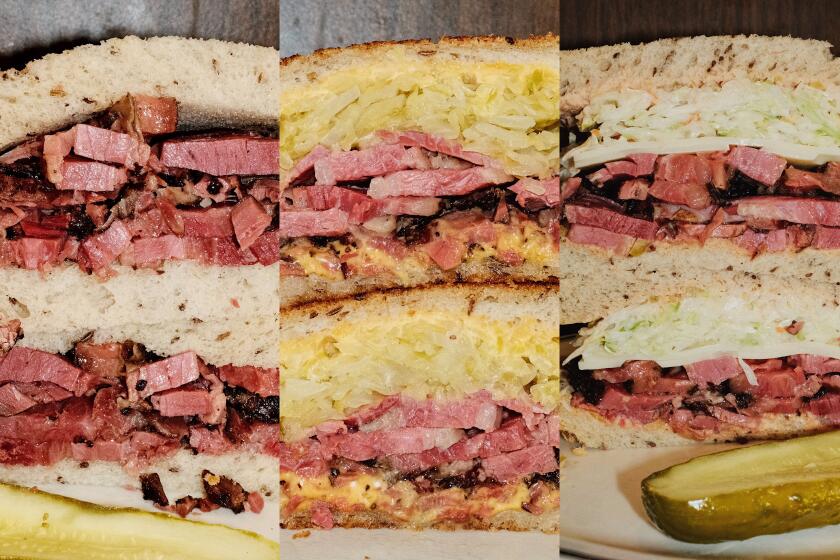Dig your own hole, then enjoy

An old-time L.A. pit barbecue needs plenty of space. If you must try this at home, pick a flat area that is at least 10 feet from trees, because of the danger of fire. Clear all weeds and other plants 5 feet around the pit. Make sure you have a water hose handy when you’re barbecuing.
Now dig a hole 4 or 5 feet in diameter and about 6 feet deep. The walls should slope outward very slightly to keep them from collapsing.
Put a 1-foot layer of bricks or rocks (preferably volcanic rocks) in the bottom of the pit.
Get a sheet metal shop to make you a lid large enough to cover the mouth of the pit. It’s a good idea to have a couple of handles welded or screwed onto it for ease in handling.
Buy a third of a cord (40 cubic feet) of hardwood; you probably won’t use it all, but it’s better to be safe than sorry. Joe Romero used oak; we used a mixture of oak and pecan.
Before starting the barbecue, sort out a lot of thin pieces of wood for kindling — you’ll need them, because it can be devilishly hard to get a fire started in a pit.
Buy at least one whole top round (and if you’re already going to all this trouble, you might as well get two and invite lots of guests). Trim off the fat. Make a number of gashes on each side of the meat and insert slivers of garlic — use one head of garlic per round. Sprinkle the meat with cracked pepper and plenty of Mexican oregano.
Using stout twine, tie the meat into a compact shape, then wrap it in cotton sacking (such as tea towels) and tie the cloth onto the meat. Moisten the sacking generously with wine vinegar, up to a cup per bundle. Put the bundle in a large dish or a heavy plastic garbage bag and marinate at room temperature for at least 12 hours.
Start the fire 15 hours before the meal, allowing six hours to create the bed of coals and nine hours for cooking. The first hour will require constant attention. Put in larger and larger pieces of wood as the fire grows. Three hours after starting the fire, it should be a roaring blaze. Keep the level of the wood about a foot below the top of the pit. Continue feeding the fire for two more hours, then let it burn down to coals. At this point, the coal bed will be about 2 1/2 feet below the surface of the pit.
While the coals are burning down, soak one burlap sack per round in water until it’s saturated. Put the bundle of meat in its sack. For convenience, you may wrap a length of 1/8-inch wire around the sack and twist a loop to create a handle.
When the coals no longer flame, put a large (18- by 24-inch) metal rack onto the coals and then lower the meat onto it. Move the lid onto the pit and shovel dirt around the edges wherever smoke starts to leak out. Sprinkle an inch or two of dirt all over the lid for insulation.
Rest for nine hours, then open the pit and remove the meat.
If you want to create a permanent earth barbecue pit, Jim Gallivan, who made the Historical Society of Pomona’s pit at the Adobe de Palomares, provides one model. He built a slightly raised brick lip surrounding the pit and lowered a cylindrical steel sleeve (weighing 300 pounds) into it, forming a wall. For details, see www.Pomonahistorical.org/PigPitCooking.html.
— -- Charles Perry
More to Read
Eat your way across L.A.
Get our weekly Tasting Notes newsletter for reviews, news and more.
You may occasionally receive promotional content from the Los Angeles Times.










